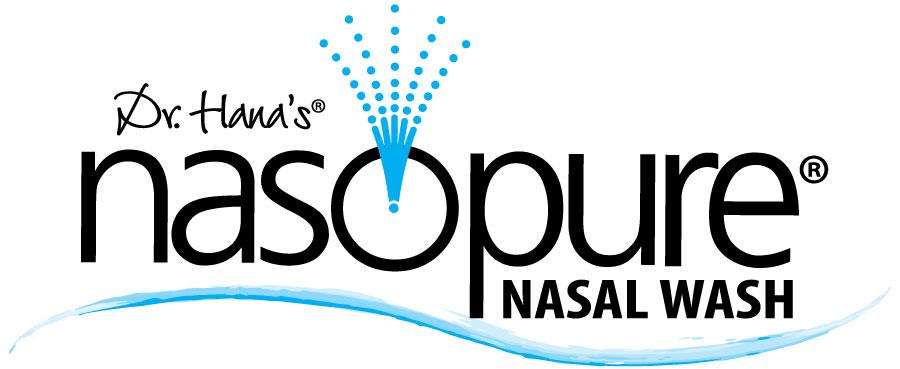Studies show that nasal irrigation helps to manage and relieve symptoms associated with allergies, cold, flu, sinusitis, and rhinitis!
See the dozens of studies and their summaries below supporting nasal irrigation:
1.Rabago D, Zgierska A, Mundt M, Barrett B, Bobula J, Maberry R. Efficacy of daily hypertonic saline irrigation among patients with sinusitis: a randomized controlled trial. Journal Family Practice 51(12): 1049-55, 2002 Dec. “Conclusions: Daily hypertonic saline irrigation improves sinus-related quality of life, decreases symptoms, and decreases medication use in patients with frequent sinusitis. Primary care physicians can feel comfortable recommending this therapy”.
2. Bothwell MR, Parsons DS: Pediatric Chronic Rhinosinusitis: A Step-Wise Approach to Medical and Surgical Management. Operative Techniques in Otolaryngology – Head and Neck Surgery 12,1:34-39, 2001. “General treatment measures are directed at establishing a more normal nasal environment through moisturization, humidification, and the reduction of swelling. Nasal irrigation with buffered hypertonic saline…”
3. Georgitis JW: Nasal Hyperthermia and Simple Irrigation for Perennial Rhinitis. Chest 106,5:1487-1491, 1994. “Conclusions: This study demonstrated the usefulness of large particle vapor treatment and saline solution irrigation in reducing inflammatory mediators in nasal secretions and indirectly supports the clinical efficacy of these treatments for chronic rhinitis”.
4. Grossan M: Irrigation of the Child’s Nose. Clinical Pediatrics 13,3:229-231, 1974. “Often stubborn otitis media or serous otitis will not improve until after the nasal pus is removed”.
5. Manning SC: Pediatric Sinusitis. Otolaryngologic Clinics of North America. 26,4:623-637, 1993. “…saline… can improve nasal function by mechanically removing sensitizing agents, by enhancing mucociliary transport via increased relative humidity, and by improving sinus drainage and ventilation via a mild vasoconstrictive effect. Compliance can be enhanced by using prepared pH-neutral solutions and by emphasizing to the parents that saline lavage represents a long-term hygiene strategy aimed at prevention of sinusitis, analogous to tooth brushing to prevent caries”.
7. Rachelefsky GS, Slavin RG, Wald ER. Sinusitis: Acute, Chronic – and Manageable. Patient Care. February 28, 1997 pp 105-117. “IAdjunctive treatments are very helpful for many patients… Saline drops can be used as often as the patient wishes; this helps to clean the nasal passages, remove crusting, and may soothe the inflammation”.
8. Salvin RG, Cannon RE, Friedman WH, Palitang E, Sundaram M: Sinusitis and Bronchial Asthma. Journal of Allergy and Clinical Immunology. 66,3:250-257, 1980. “The frequent association of paranasal sinus disease and bronchial asthma has been observed for many years… Occasionally the mucosa becomes sufficiently swollen to result in obstruction of the natural ostia through which the sinuses normally drain. Failing to drain freely, the sinuses become secondarily infected”.
9.Seaton T: Hypertonic Saline for Chronic Sinusitis. The Journal of Family Practice. 47,2:94-96. “This study demonstrates some clinical benefit from the use of intranasal hypertonic saline washes… this treatment is inexpensive, safe, and generally well tolerated… It should be considered as adjunctive therapy in children with chronic sinusitis”.
10.Talbot AR, Herr MH, Parsons DS. Mucociliary Clearance and Buffered Hypertonic Saline Solution. Laryngoscope. 107:500-503, 1997. “For 10 years, the senior author has used buffered hypertonic saline nasal irrigation for patients with acute/chronic sinusitis and for those having undergone sinus surgery. The outcome showed buffered hypertonic saline nasal irrigation to improve mucociliary transit times of saccharin… Buffered hypertonic saline nasal irrigation is an important addition to the care of sinus disease”.
11. Tomooka LT, Murphy C, Davidson TM: Clinical Study and literature Review of Nasal Irrigation. The Laryngoscope. 110:1189-1192, 2000. “Nasal irrigation is effective in improving symptoms and the health status of patients with sinonasal disease.”
12. Zeiger RS, Schatz M: Chronic Rhinitis: A Practical Approach to Diagnosis and Treatment. Immunology & Allergy Practice. 4,4:26-35. “Nasal tissue appears to benefit greatly from warm irrigation with saline. Saline irrigation augments mucociliary flow, liquefies tenacious mucus, soothes irritated tissue, augments repair processes, reduces forceful nose blowing, and improves olfaction. Its use should be considered for all patients with chronic rhinitis; benefit appears maximal for rhinitis medicamentosa, atrophic rhinitis, nasopharyngitis, and sinusitis… Emphasis on avoidance of allergens and non-specific precipitants and the use of intranasal saline is the initial approach to pregnant women with rhinitis”.
13. Allergy and Asthma Center of Rochester, Michigan: Medical Conditions: Rhinitis and Pregnancy. Web site Jan 2003. “… a buffered saline nasal rinse spray may be useful for the dryness, bleeding, and vascular congestion associated with rhinitis during pregnancy.”
14. Pediatric Allergy Immunology 2003 Apr;14(2):140 in Pediatric Notes 2003 Jun 26;27(26):103) “hypersaline nasal irrigation improves symptoms in children during allergy season.”
15. David Shoseyov, MD; Haim Blbl, MD; et al. Journal of Allergy and Clinical Immunology 1998; 101:602-5. Treatment with hypertonic saline versus normal saline nasal wash of pediatric chronic sinusitis. “Hypertonic Saline 3 times a day for 1 month improves the clinical & radiologic status among children with Chronic Sinusitis.”
16.Diane G. Heatley, MD; Kari E. McConnell, RN, CORLN; Tony L. Kille, BS; Glen A. Leverson, PhD Presented at the annual Meeting of the American Academy of Otolaryngology- Head and Neck Surgery, Washington DC. 9/25/00. ; Nasal Irrigation for the alleviation of sinonasal symptoms. “Daily nasal irrigation with hypertonic saline significantly improved symptoms of chronic sinusitis in. Many subjects were able to decrease or eliminate medication used during the study period”.
additional studies available upon request
